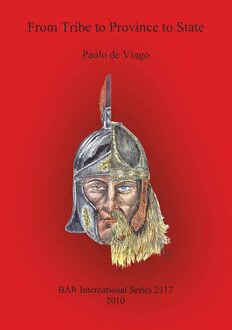
From Tribe to Province to State: A historical-ethnographic and archaeological perspective for reinterpreting the settlement processes of the Germanic populations in Western Europe between Late Antiquity and the Early Middle Ages PDF
333 Pages·2010·136.623 MB·English
Most books are stored in the elastic cloud where traffic is expensive. For this reason, we have a limit on daily download.
Preview From Tribe to Province to State: A historical-ethnographic and archaeological perspective for reinterpreting the settlement processes of the Germanic populations in Western Europe between Late Antiquity and the Early Middle Ages
Description:
This study focuses on the diversity with which early medieval society formed not only among macro European zones but also within individual areas, and thus on the need to look beyond the models elaborated during a phase in which archaeological sources were still fragmentary and inadequate. Through a combination of historical and documented-based investigation and the most recent extensive archaeological data, the author makes a comparative analysis of the different results of the movements of Germanic groups, especially in the particularly representative area of northern Italy and the Alpine system, during various periods: in the 5th century as auxiliary troops under the control of the same Roman Empire (Burgundians), then as the new military élites and finally as the new ruling class (Ostrogoths and Langobards), revealing how the cultural evolution of the new sites appears to be strictly correlated to different situations and often common to the new Germanic element and to the local Romanised components. Interesting and stimulating concepts that underscore the formation of a shared culture are presented in this contribution along with a refreshing new perspective of certain aspects, such as the evolution of clothing and funerary rituals, already considered expressions of simple ethnic preservation.
See more
The list of books you might like
Most books are stored in the elastic cloud where traffic is expensive. For this reason, we have a limit on daily download.
